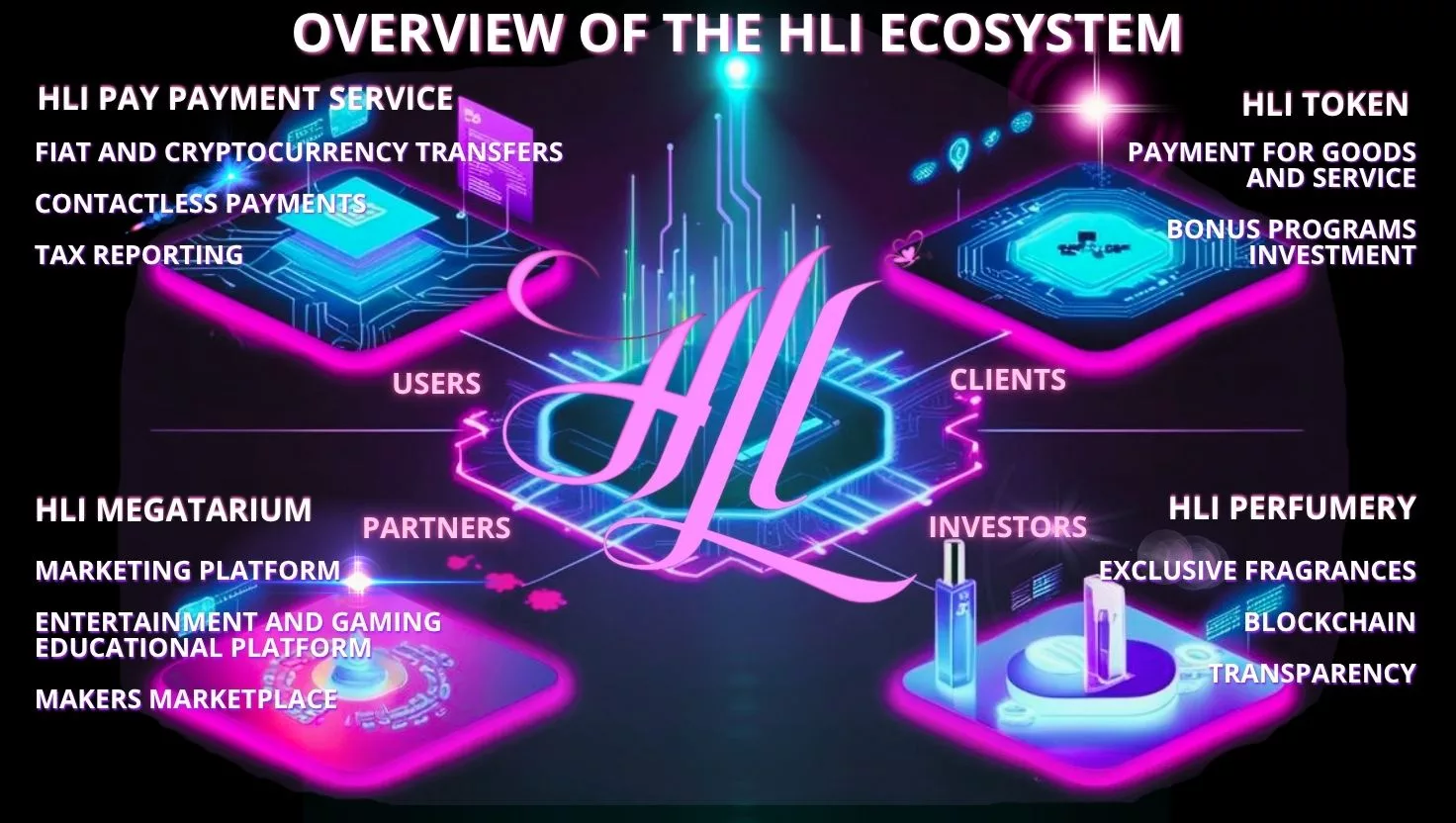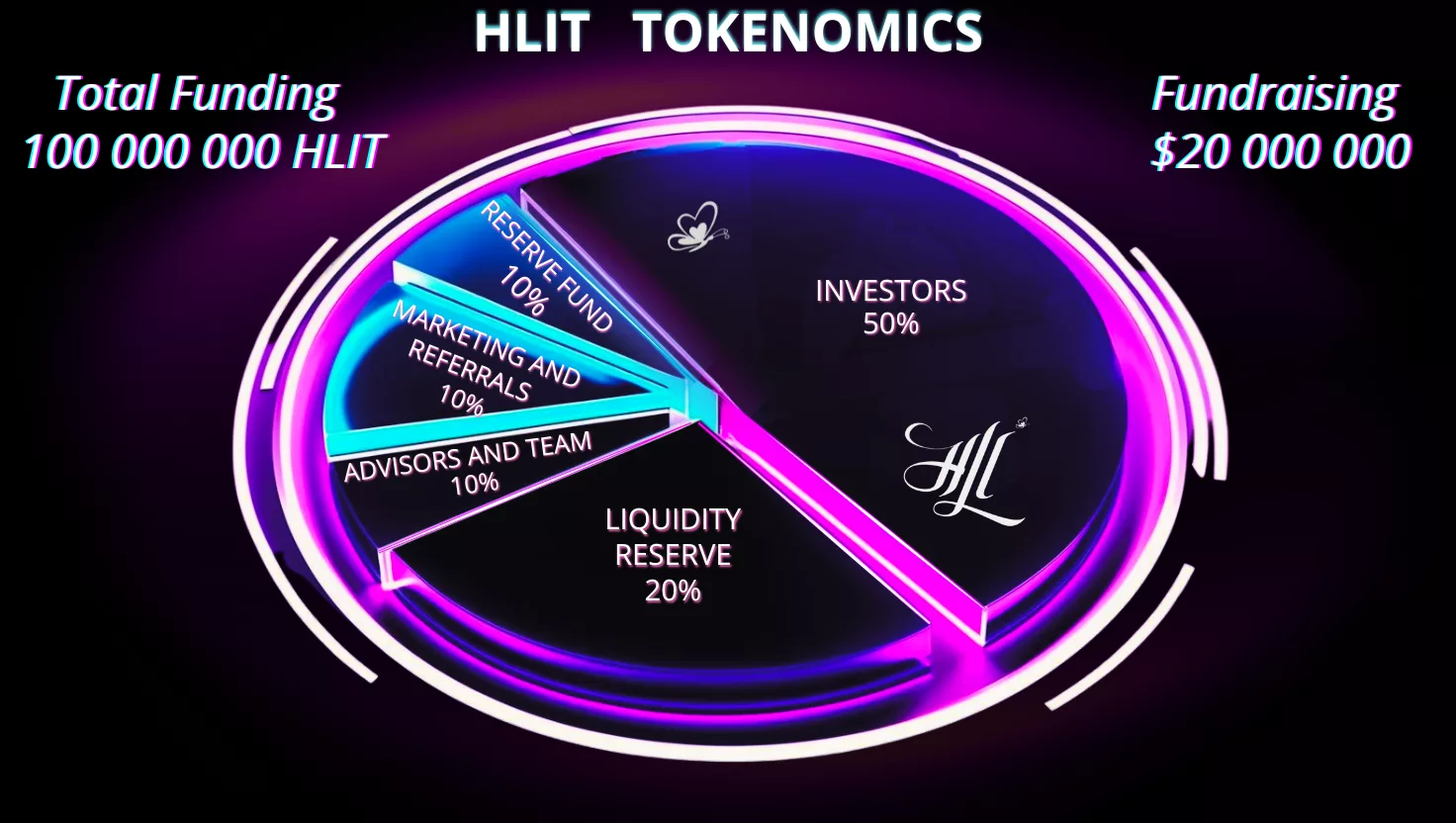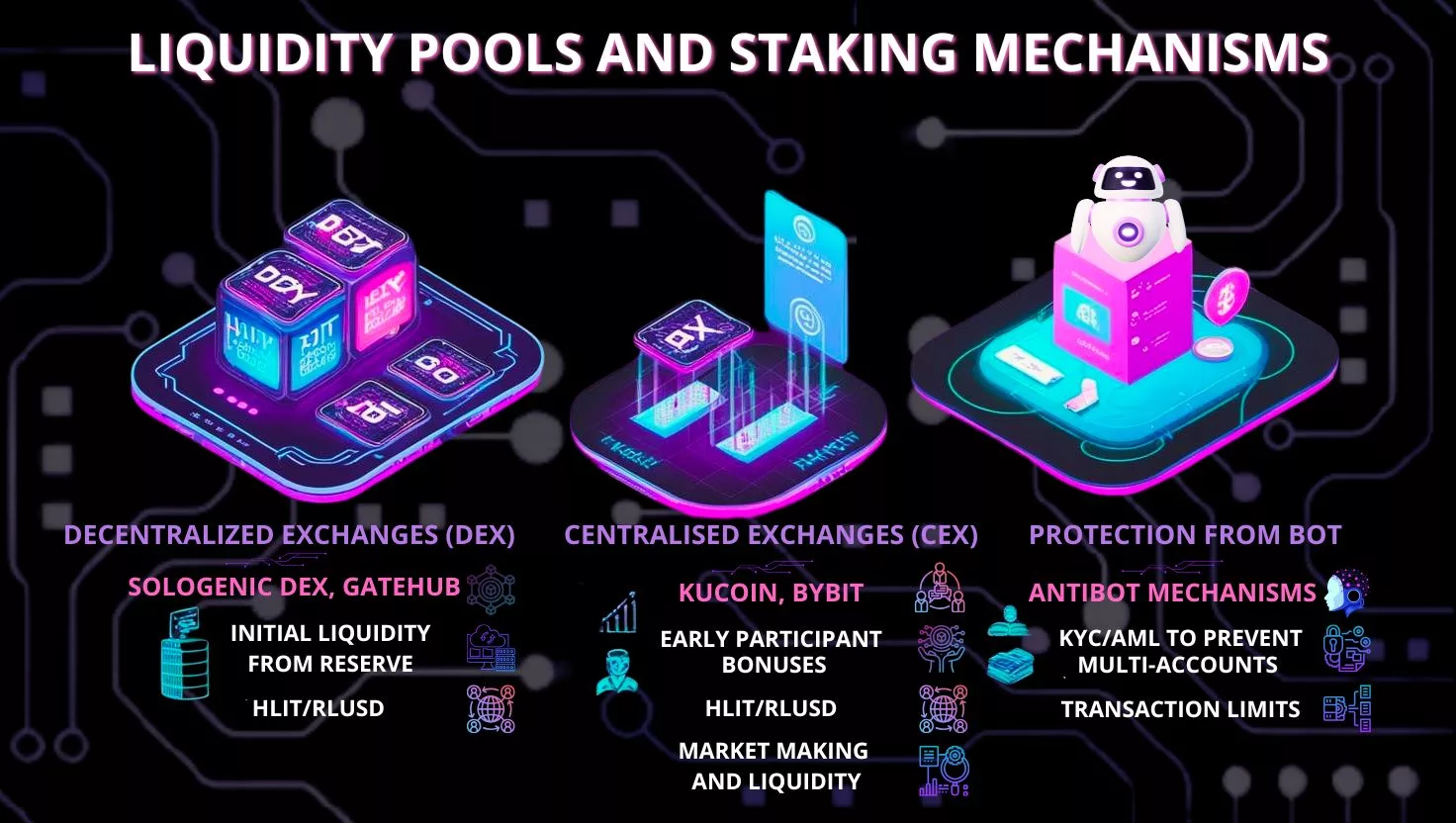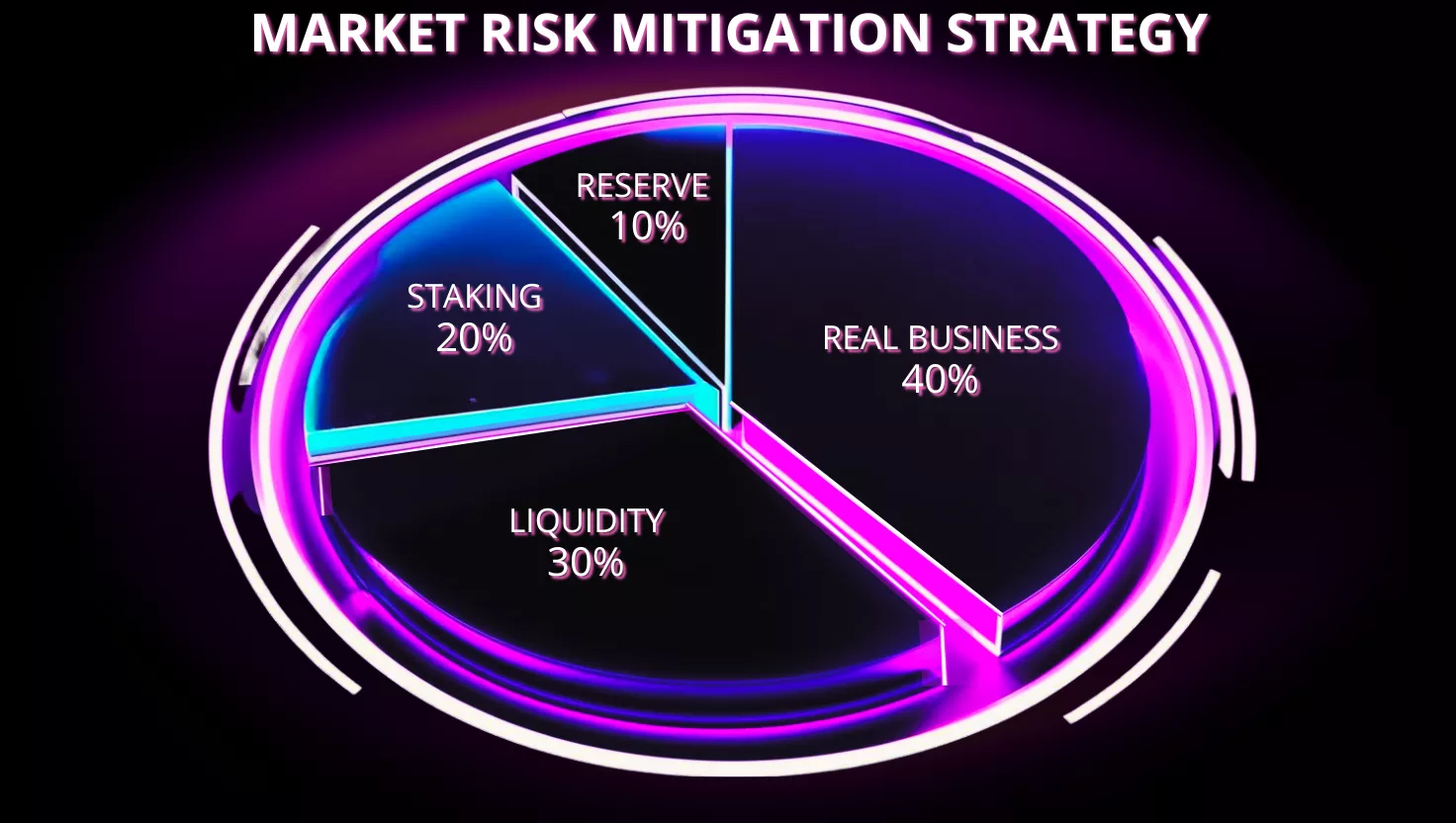ABSTRACT
The Happy Life Ideal Token (HLIT) is a utility token designed to integrate seamlessly into the Happy Life Ideal (HLI) ecosystem, which combines luxury perfumery, financial technology, and a metaverse of opportunities. HLIT serves as a bridge between traditional business operations and innovative blockchain solutions, offering users and investors a unique opportunity to participate in a growing, transparent, and decentralized ecosystem. This white paper provides a comprehensive overview of the HLIT token, its underlying technology, tokenomics, and the strategic vision for its integration into the HLI ecosystem.
TABLE OF CONTENTS
1. Introduction
— 1.1 Overview of the HLI Ecosystem
— 1.2 Purpose of the HLI Token
— 1.3 Key Features and Benefits
2. Technical Architecture
— 2.1 Blockchain Platform: XRP Ledger (XRPL)
— 2.2 Smart Contract Design
— 2.3 Security and Auditing
3. Tokenomics
— 3.1 Token Distribution
— 3.2 Fund Allocation
— 3.3 Liquidity Pools and Staking Mechanisms
— 3.4 Token Burning and Buyback Programs
4. Use Cases
— 4.1 Payment Services (HLI PAY)
— 4.2 Integration with HLI Perfumery
— 4.3 Megatarium Opportunities
— 4.4 Investment and Staking
5. Governance and DAO
— 5.1 Decentralized Autonomous Organization (DAO)
— 5.2 Voting Mechanisms
— 5.3 Community Involvement
6. Roadmap
— 6.1 Development Phases
— 6.2 Milestones and Timeline
7. Team and Advisors
— 7.1 Core Team
— 7.2 Advisors and Partners
8. Risk Factors and Mitigation
— 8.1 Market Risks
— 8.2 Regulatory Risks
— 8.3 Technical Risks
9. Conclusion
— 9.1 Vision for the Future
— 9.2 Call to Action
1 . Introduction
1.1 Overview of the HLI Ecosystem
The Happy Life Ideal (HLI) ecosystem is a multifaceted platform that combines luxury perfumery, financial technology, and a Megatarium. The ecosystem is built on the principles of transparency, innovation, and accessibility, aiming to create a sustainable model that benefits all participants.

The HLI ecosystem includes:
— HLI PAY: A payment service that facilitates instant transactions in both fiat and cryptocurrencies, offering seamless integration with global financial systems.
— HLI Perfumery: A luxury perfume brand that leverages blockchain technology to ensure transparency and authenticity in its supply chain.
— Megatarium: A digital ecosystem where users can interact, earn, and explore new opportunities in a virtual environment and in real life.
1.2 Purpose of the HLIT Token
The HLIT token is the backbone of the HLI ecosystem, serving multiple functions:
— Payment and Transactions: HLIT can be used to pay for goods and services within the HLI ecosystem, including perfumes, Megatarium, and more.
— Investment and Staking: HLIT offers investors the opportunity to earn passive income through staking and participation in liquidity pools.
— Governance: HLIT holders can participate in the governance of the ecosystem through a Decentralized Autonomous Organization (DAO), influencing key decisions and the future direction of the project.
1.3 Key Features and Benefits
— Transparency: All transactions and token movements are recorded on the XRP Ledger, ensuring full transparency and security.
— Low Transaction Fees: The XRP Ledger offers low-cost transactions, making HLIT an efficient tool for payments and transfers.
— Scalability: The XRP Ledger can handle millions of transactions per day, ensuring that the HLIT ecosystem can scale as it grows.
— Liquidity: HLIT is designed to be highly liquid, with multiple liquidity pools and staking options available to investors.
2. Technical Architecture
2.1 Blockchain Platform: XRP Ledger (XRPL)
The HLIT token is built on the XRP Ledger (XRPL), a decentralized, open-source blockchain that is known for its speed, scalability, and low transaction costs. XRPL is ideal for the HLIT ecosystem due to its:
— High Transaction Throughput: XRPL can process up to 1,500 transactions per second, ensuring that the HLIT ecosystem can handle high volumes of transactions without congestion.
— Low Transaction Fees: Transactions on XRPL cost a fraction of a cent, making it cost-effective for users and businesses.
— Decentralization: XRPL is maintained by a global network of validators, ensuring that the network is secure and resistant to censorship.
2.2 Smart Contract Design
HLIT utilizes smart contracts to automate key functions within the ecosystem, including:
— Token Distribution: Smart contracts manage the distribution of HLIT tokens during private and public sales, ensuring transparency and fairness.
— Staking and Rewards: Smart contracts automate the staking process, distributing rewards to participants based on their contributions to liquidity pools.
— Governance: Smart contracts facilitate voting and decision-making within the DAO, allowing HLIT holders to participate in the governance of the ecosystem.
2.3 Security and Auditing
Security is a top priority for the HLIT ecosystem. All smart contracts undergo rigorous auditing by independent third-party firms to ensure that they are free from vulnerabilities and exploits. Additionally, the XRP Ledger’s robust security features provide an additional layer of protection for HLIT transactions.
3. Tokenomics
3.1 Token Distribution
The total supply of HLIT tokens is capped at 100,000,000.
The distribution of tokens is as follows:
10% — Reserve Fund: Tokens set aside for unforeseen expenses and future development.
50% — Investors: Tokens allocated for private, seed, and public sales.
10% — Team and Advisors: Tokens allocated to the core team and advisors, subject to a vesting period of 12-24 months.
20% — Liquidity Reserve: Tokens reserved for liquidity pools and staking rewards.
10% — Marketing and Referrals: Tokens allocated for marketing campaigns and referral programs.
The distribution of tokens is as follows:
— 50% — Investors: Tokens allocated for private, seed,

3.2 Fund Allocation
The funds raised through the sale of HLIT tokens will be allocated as follows:
10% — Reserve: A reserve fund for unexpected expenses and future opportunities.
40% — Development: Funding for the development of the HLI PAY platform, Megatarium, and other ecosystem components.
30% — Marketing: Budget for global marketing campaigns, partnerships, and community engagement.
20% — Operations: Funds for operational expenses, including legal, compliance, and administrative costs.

3.3 Liquidity Pools and Staking Mechanisms
HLIT will be supported by multiple liquidity pools on both decentralized (DEX) and centralized exchanges (CEX).
These pools will ensure that HLIT remains highly liquid, allowing users to buy and sell tokens with minimal price slippage.
Staking mechanisms will also be implemented, allowing users to earn passive income by locking up their HLIT tokens in staking contracts.

3.4 Token Burning and Buyback Programs
To maintain the value of HLIT, a portion of the tokens will be periodically burned, reducing the total supply and increasing scarcity. Additionally, a buyback program will be implemented, where a percentage of the ecosystem’s profits will be used to purchase HLIT tokens from the open market, further reducing supply and supporting the token’s price.
4. Use Cases
4.1 Payment Services HLI PAY
HLIT can be used within the HLI PAY platform to facilitate instant, low-cost transactions in both fiat and cryptocurrencies. Users can also benefit from features such as tax reporting, contactless payments, and integration with global financial systems.
4.2 Integration with HLI Perfumery
HLIT will be integrated into the HLI Perfumery brand, allowing customers to purchase luxury perfumes using the token. Additionally, HLIT holders will have access to exclusive discounts, bonus programs, and early access to new product launches.
4.3 Megatarium Opportunities
The Megatarium will offer users a digital space to interact, earn, and explore new opportunities. HLIT will be the primary currency within the metaverse, used for transactions, investments, and access to exclusive content.
4.4 Investment and Staking
HLIT offers investors multiple ways to earn passive income, including staking, liquidity farming, and participation in the DAO. These mechanisms provide a steady stream of rewards for those who contribute to the growth and stability of the ecosystem.
5. Governance and DAO
5.1 Decentralized Autonomous Organization (DAO)
The HLIT ecosystem will be governed by a DAO, allowing token holders to participate in key decision-making processes. The DAO will be responsible for approving new features, allocating funds, and setting the overall direction of the project.
5.2 Voting Mechanisms
HLIT holders will be able to vote on proposals submitted to the DAO. Voting power will be proportional to the number of tokens held, ensuring that those with a larger stake in the ecosystem have a greater say in its future.
5.3 Community Involvement
The HLIT ecosystem is designed to be community-driven, with regular updates, AMA (Ask Me Anything) sessions, and opportunities for users to contribute to the project’s development. Community members will also have the opportunity to earn rewards for their contributions, such as creating content, participating in marketing campaigns, and referring new users.
6. Roadmap
6.1 Development Phases
— Q4 2024 — Q1 2025: Preparation for Private Sale, technical development, and legal compliance.
— Q2 2025: Launch of Private Sale and Seed Sale, activation of marketing campaigns.
— Q3 2025: Listing on decentralized exchanges (DEX), launch of Public Sale 1.
— Q4 2025: Completion of Public Sale 2.
6.2 Milestones and Timeline
— December 2024: Completion of smart contract development and auditing.
— February 2025: Launch of Private Sale, 10% of total supply raised.
— April 2025: Launch of Seed Sale, 20% of total supply raised.
— September 2025: Launch of Public Sale 1, 10% of total supply raised.
— December 2025: Launch of Public Sale 2, 10% of total supply raised
7. Team and Advisors
7.1 Core Team
— Natalia Chupina: Founder and CEO, expert in luxury perfumery and brand development.
— Nikita Khokhlov: Technical Director, specialist in blockchain development on XRP Ledger.
— Alex Khan : Marketing Director, experienced in investment attraction and ICO launches.
7.2 Advisors and Partners
The HLIT project is supported by a team of advisors with expertise in blockchain technology, finance, and luxury goods. These advisors provide strategic guidance and ensure that the project remains on track to achieve its goals.
8. Risk Factors and Mitigation
8.1 Market Risks
The cryptocurrency market is highly volatile, and the value of HLIT may fluctuate significantly.
To mitigate this risk, the HLIT ecosystem is designed to provide real-world utility, ensuring that the token has intrinsic value beyond speculative trading.

8.2 Regulatory Risks
Regulatory changes could impact the HLIT ecosystem. The project is committed to compliance with all relevant laws and regulations, and legal experts are consulted regularly to ensure that the project remains compliant.
8.3 Technical Risks
As with any blockchain project, there is a risk of technical issues, such as bugs or vulnerabilities in the smart contracts. To mitigate this risk, all smart contracts undergo rigorous auditing by independent third-party firms.
9. Conclusion
The HLIT token is more than just a cryptocurrency; it is the foundation of a new ecosystem that combines luxury, technology, and innovation. By integrating blockchain technology into the HLI brand, we are creating a transparent, decentralized, and sustainable platform that benefits all participants.
We invite you to join us on this exciting journey. Invest in HLIT today and become part of a growing ecosystem that is redefining the future of luxury, finance, and digital interaction.
Disclaimer:
This white paper is for informational purposes only and does not constitute financial, legal, or investment advice. Please consult with a professional advisor before making any investment decisions.
